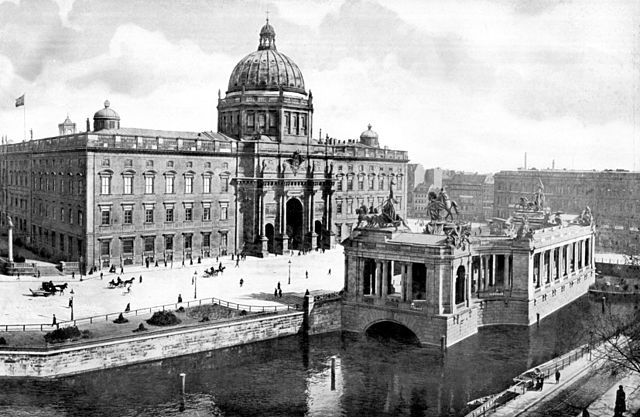
In July, the Berlin State Museums unveiled an exhibition of items that range from 17th-century pocket globes from London to 19th-century Angolan figures to carvings from New Guinea. The common denominator of the hodgepodge collection, and the ongoing subject of much debate in Germany, is its eventual home: a new 18th-century structure in the heart of Berlin.
Built under the direction of Prussian kings, the Berlin City Palace (Berliner Stadtschloss, above) was the backdrop of protests against the Prussian monarchy in the Revolution of 1848 and came to be seen as a symbol of oppression. It was damaged by the Allies during World War II and demolished by the East Germans in 1950.
The German Bundestag decided in 2007 to proceed with a reconstruction plan that has been met with a lukewarm public response at best. Many Berliners, concerned about the high cost, question the need to rebuild what was never a well-loved building. Last December, an Italian, Franco Stella, was chosen to design the building. He was selected from a field of architects whose lack of international status showed the unpopularity of the requirements: faithful reproduction of three of the original façades, with the fourth of modern design.
The new building is planned to house an international forum for art, culture, and science called the Humboldt Forum. Completion is set for 2013.

